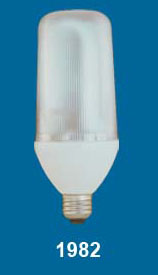 23 watt energy saving bulb
23 watt energy saving bulb Through the years we have received numerous phone calls and emails about concerns with energy saving light bulbs. Today due to the lack of proper information, many people are concerned with these bulbs containing Mercury.
So I would like to provide some important additions to the facts and myths about compact energy saving fluorescent light bulbs. With compact energy saving fluorescent light bulbs, they must be recycled because many people are now using them. We cannot allow large amounts of mercury to be "dumped" because this will create a gateway for mercury to get into our drinking water tables.
 SL-18, 18 watts equal to 75
SL-18, 18 watts equal to 75 With recycling, the solid plastic housing of these bulbs is opened and the double glass sealed envelope with mercury (far less mercury than the original bulbs of the 1980s) is removed for proper disposal. So with this design, EPA and other organization will error on the side of caution when they suggest how to deal with a broken bulb. In fact, research demonstrates that these bulbs do require careful handling and disposal, the hazard does not warrant evacuating the house or even the room. If this was true, the government would require Warning Labels on the light bulb boxes.
In 2008 the scientific journal Environmental Health Perspectives, stated these bulbs contain 3 to 5 milligrams of mercury, about one-hundredth of the mercury in old thermostats that are still inside thousands of homes in America.


Most of the exaggerated myths on compact energy saving fluorescent light bulbs comes from the manufacturers, who twenty years ago didn't and couldn't (due to patents) make energy saving bulbs to compete with North American Philips.
Bill, GTG
www.GoingTrueGreen.com






















